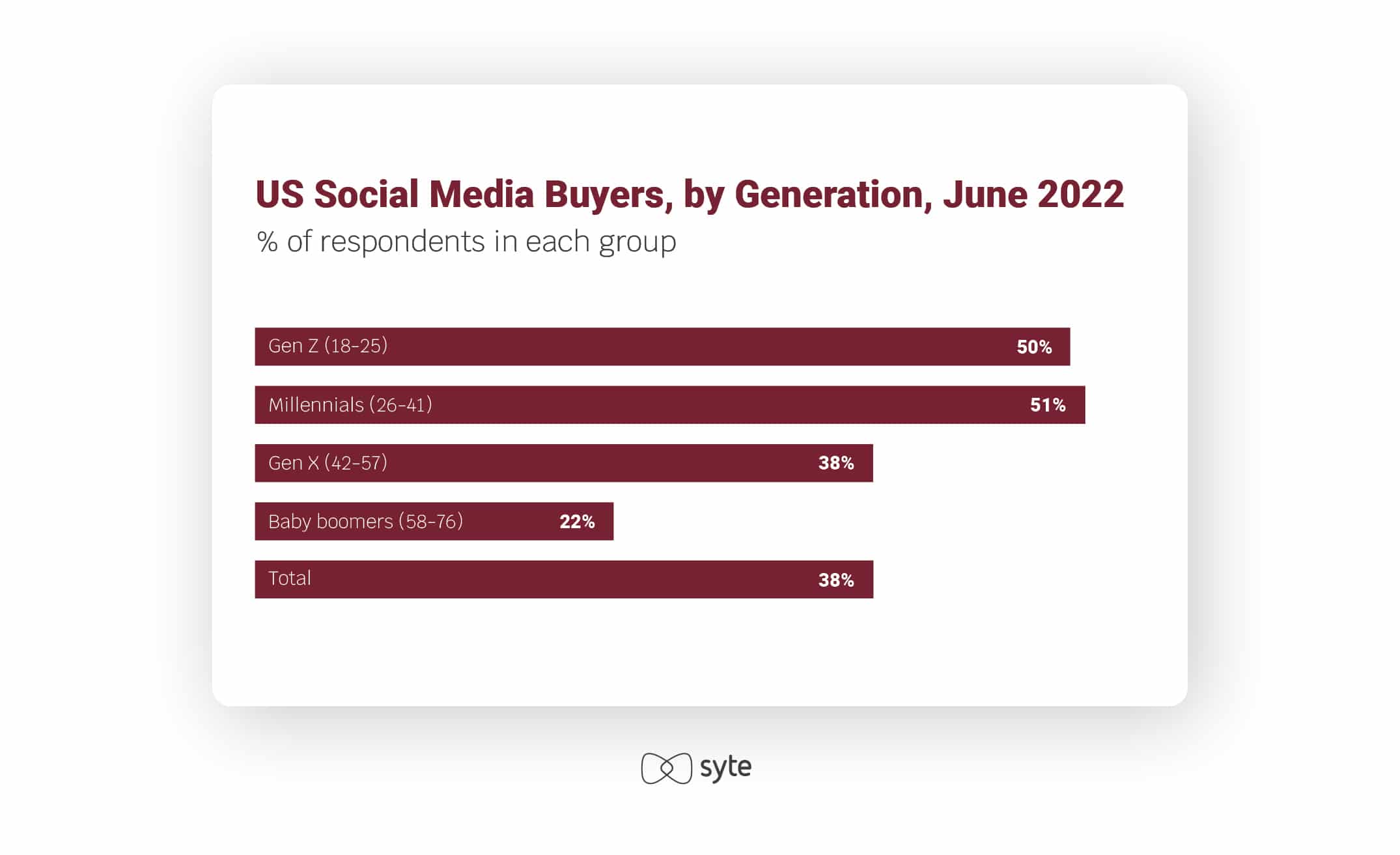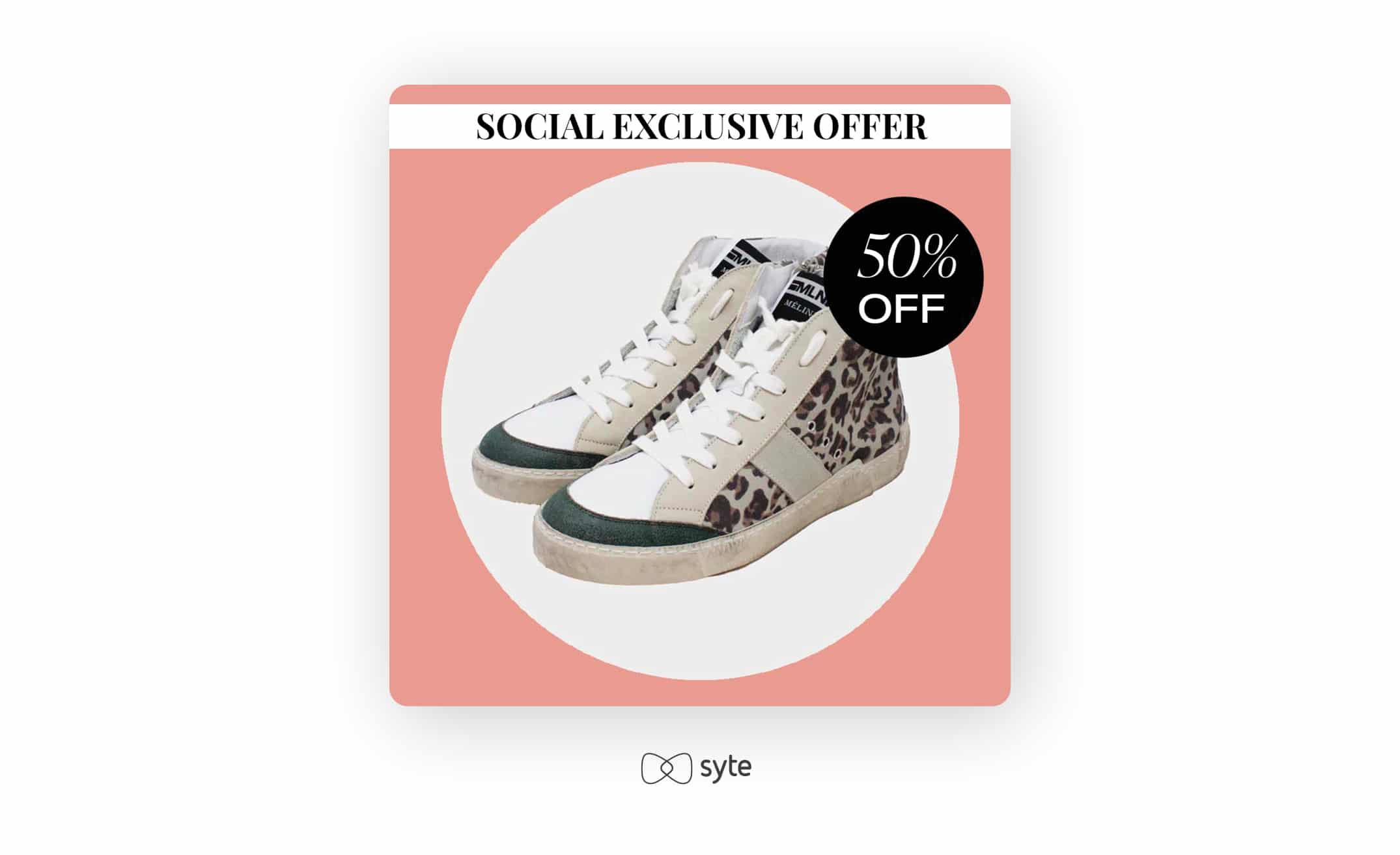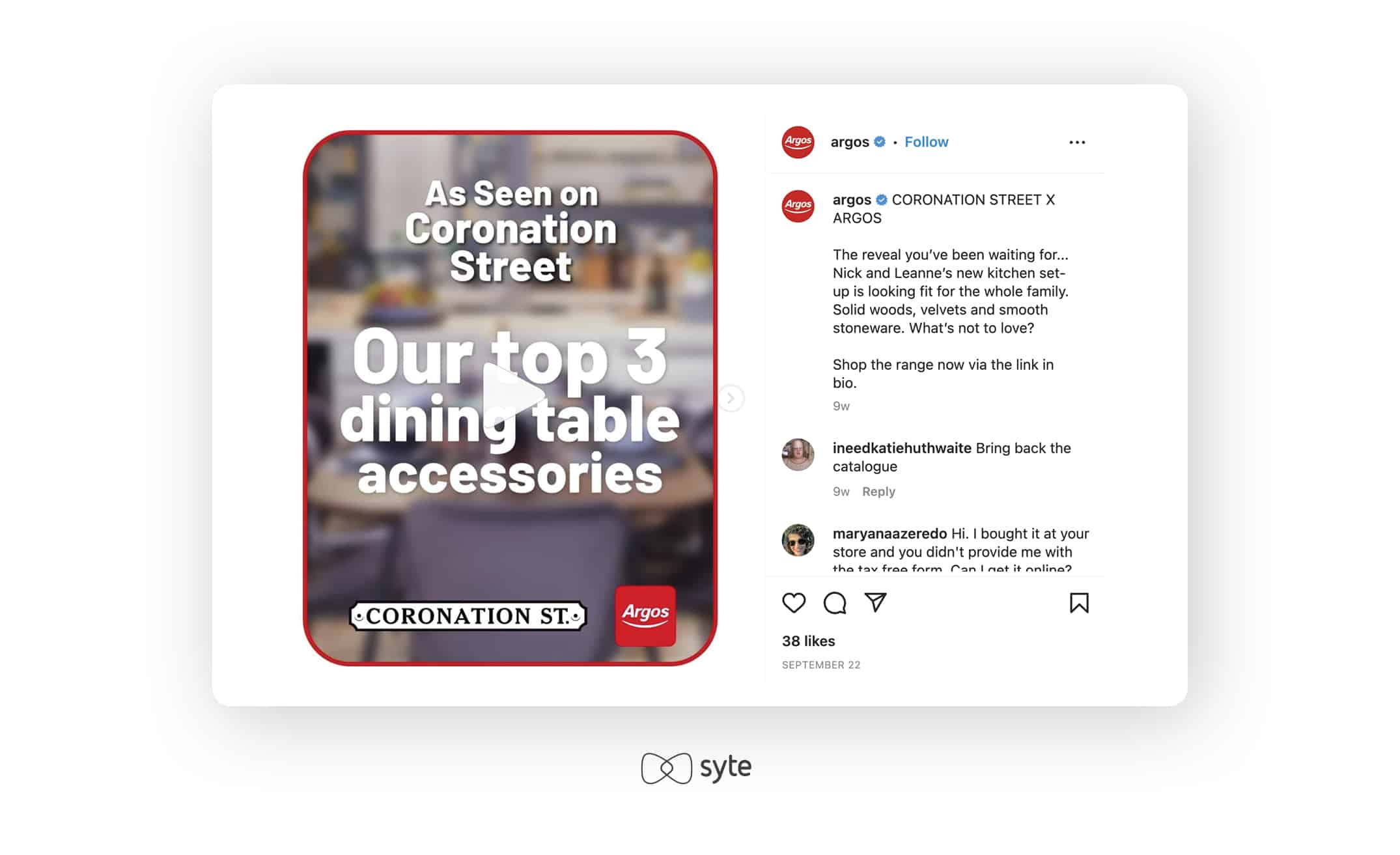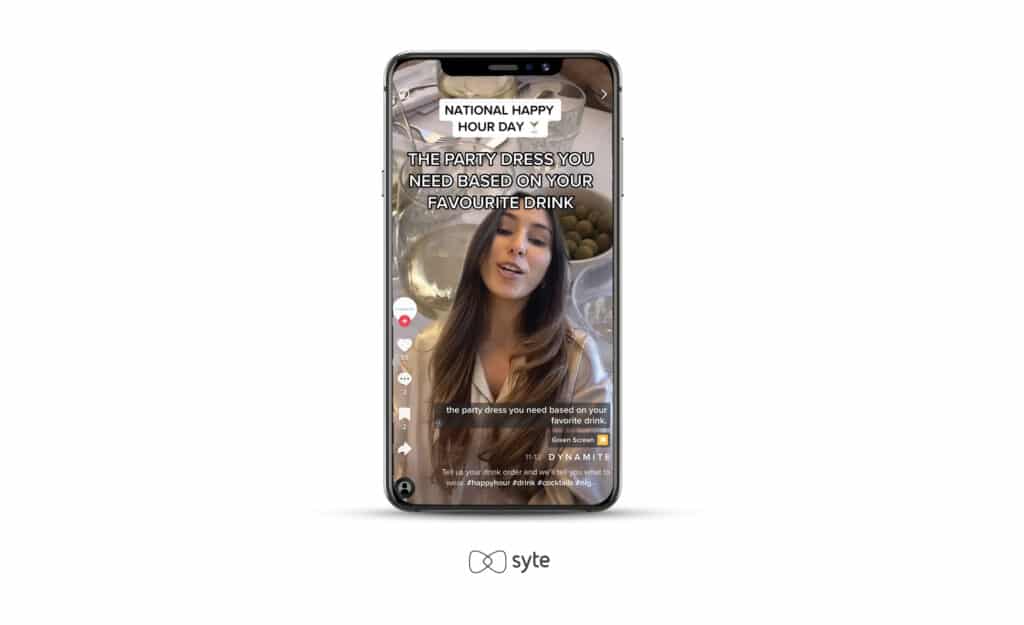Have you noticed lately that every scroll down your Instagram feed gives you more opportunities to purchase a new pair of jeans or a trendy necklace? The boundaries between browsing social media and online shopping are blurring. And customers are loving it: 98% of those surveyed planned to make a purchase through social media or influencer commerce in 2022.
Every brand has to show up on social media and make sure they are poised to sell where customers are buying.
But there’s no one-size-fits all marketing strategy that will work for every online shopper. A Gen Z fashionista will respond to different calls to action and more particular content than a Baby Boomer bargain hunter. Here is some helpful information for every brand on how to best mix their own cocktail of user-generated content, influencers, and special promotions to successfully appeal to each generation in its own unique ways — and win at social commerce.
Swipe Up to Purchase
Social commerce can be defined as the use of social media platforms to fulfill the entire shopping process, from product discovery to check-out. Accenture predicts the global social commerce industry to grow three times as fast as traditional eCommerce, to a total of $1.2 trillion by 2025. Clearly, there’s a huge opportunity here. And while Gen Z and Millennial shoppers drive the majority of global social commerce spend, a significant portion (38%) is represented by older generations. And each generation needs to be reached in a different way.
Some barriers to adoption exist for all generations. One such concern comes down to trust – will purchases be protected or refunded properly? – the same concern shoppers had when e-commerce first emerged. Both retailers and platforms must show that they are constantly taking measures to foster trust and alleviate customer anxieties.
Once you have the basics covered, you can narrow down your audience and get to know what makes them tick. Here’s a summary of each generation, their favorite social networks, how they like to discover products, and what you can do to make them loyal customers of your brand.

Gen X (ages 42-57) Social Commerce Shopping Habits
Key takeaways:
- Most likely to find your brand through online search
- Facebook is their favorite social platform
- Shop online more than in-store (though they prefer the brick-and-mortar experience.)
Let’s start with Generation X, which makes up about 20% of the population. Previously known as “slackers,” Gen X-ers have now lived (and worked) through three recessions, and have emerged strong, resilient, and fiercely independent. They are currently near the peak of their purchasing power, but still may have obligations, including sending children to college and caring for aging parents.
Online search is tied with social media as the top product discovery channels for Gen X.
So why do Gen X members report that they prefer retail, but in reality, they purchase online more often? It could be for convenience reasons, pandemic habits that never changed, or just the digital direction we’re all moving towards. In any case, these shoppers can be reached most effectively through virtual channels, but connections with the physical store experience will be appreciated.
About 90% of Gen Xers use social media, with Facebook the most popular channel, followed by YouTube, Instagram, Twitter, and Pinterest. To win with this group, optimize your Facebook marketing strategy for Gen X engagement, which could mean a combination of organic content, paid ads, and even platform-specific CTAs, like Facebook-only discount codes. Be sure to post new content consistently, at least once a week, and respond to comments and reviews quickly.
Blast Them With the Past
When marketing to Gen Xers, nostalgia is always a hit. Think retro looks, references to 80s movies, and jingles or quotes from old commercials. Post a throwback photo on your Facebook page or try a collaboration with a popular brand or theme from the 90s.
Although many brands are hearing advice to “Make Tiktoks, not ads,” Gen Xers generally aren’t bothered by viewing ads in their scroll.
For example, Atterley is one of the most exciting e-commerce marketplaces in the UK. The brand appeals to marketing-savvy Gen X shoppers with authentic messaging that emphasizes the human, real-life element in short videos (because, as Big Commerce notes, “Generation X loves video marketing, especially on Facebook. Videos are also more likely to be shared over social media than links and articles.”) Here’s one of their recent Facebook-only discount offers.

Baby Boomers (ages 58 to 76) Social Commerce Shopping Habits
Key takeaways:
- Look for them at sales, probably with a fistful of coupons
- Brand loyal
- Discovers new products through ads on cable television
Boomers are the second-largest population group (69.6 million people in the US in 2022.) They have money in the bank and, as they are mostly free from mortgages and other major obligations, they can buy products at full price when it suits them. Brand loyalty is a major motivator for this group. If they like your product, you have a fan for life.
Where can you find today’s Boomers? Facebook, overwhelmingly, with 91% of Boomers who use social media showing up on the app. The next most popular platform is YouTube, with 56% of Boomers watching it on a regular basis. About a quarter use Instagram, Pinterest, and Twitter regularly.
Though they do show up on social media platforms, Boomers aren’t the biggest fans of social commerce, with only 4% having purchased a product this way over the past three months. They are traditional, and tend to stick with the brands they know and trust. Influencers hold little sway with this group. Peer reviews also aren’t generally of interest to them, but expert reviews (authoritative sources with specific, official credentials) do make a difference. That might be the best way to convince this group to try something new.
Spell it Out
Gain trust with this cautious group by describing your checkout process and return policies very clearly. Providing exceptional customer service, along with perks such as free return shipping, will help foster loyalty, as well.
Perhaps as a function of their abundance of leisure time, 65% of the Boomer generation spend over an hour a day scrolling social media platforms. And like Gen X, Boomers aren’t turned off by viewing a straightforward ad in their social media scroll. They prefer buying through digital marketplaces than social media platforms, which is in line with their brick-and-mortar preferences.
Argos, part of the Sainsbury’s chain and a Syte customer, is the leading UK toy retailer and a market leader in furniture, homewares, and electronics. They capture the Boomer generation by featuring collaborations with Boomer-friendly TV shows like Eastenders (a show regular was featured in their latest Christmas video) and Coronation Street (see below for an example of one of their “As seen on” brand campaigns.

Millennials (ages 26-41) and Generation Z (ages 10-25) Social Commerce Shopping Habits
Key takeaways:
- Influenced by influencers
- You can find them on their mobile devices
- Visual platforms (Tiktok, Instagram) trump the rest
Millennials recently surpassed Baby Boomers as the biggest group, and they will continue to be a major part of the population for many years. Generation Z is the newest and most diverse of all the generations. These generations may be young, but tech-savvy. They are our future. Because many are burdened with student debt, they may be wary of overusing credit cards or “Buy now, pay later” schemes.
The hot buttons for these groups are well documented. Here are two of the most prominent:
Influencer marketing. They trust and follow influencers and peers. In fact, 55% of millennials prefer buying a product that has strong reviews. User-generated content also holds a lot of sway. This group is very comfortable discovering products on social networks and buying what they see their favorite TikTokers, television actors wearing or using—straight from the screen. This group will respond favorably to a “link in bio,” swipe to shop prompt, or a shoppable live-stream video.
Sustainability and environmental awareness. This group prefers to shop products and brands that reflect their values. They care about the planet, worry about the prevalence of single-use plastic, want to slow climate change, and appreciate transparency on product sourcing and packaging information. Along the same vein, buying second-hand and through online marketplaces , with this passion driving the resale market to enormous growth over the past three years.
What Gen Z and Millennials Expect from Brands on Social Media
This group demands seamless, digital experiences. Give these groups the functionality to discover products, research recommendations from peers and influencers, complete the purchase, and write reviews, all on the same platform. (No, this service doesn’t exist yet, but it is the future!) Remove website friction by giving them a clear path to purchase (keeping in mind their short attention spans), and throw in some hashtags like #TIktokmademebuyit and #Amazonfinds.
Dynamite, a Montreal-based trendy fashion retailer, has a fun and irreverent social presence to engage youthful shoppers, with liberal usage of trending audio, memes, and fun games like connecting cocktails with dresses, as seen in the image below. They maintain a high frequency posting cadence to capture this group, which spends the time on social media. Dynamite sprinkles their content with lots of influencers and user-generated content, even putting an appeal in their Instagram bio to “Tag us & use #DynamiteStyle for a chance to be featured.”

Shopping on Social is Here to Stay
Almost three in four (73%) respondents to a recent digital shopping survey have changed how they shop due to the COVID-19 pandemic. No matter the reason, social commerce is here to stay. Though each generation’s path to purchase may be different, there are ways to guide each one towards their perfect product.